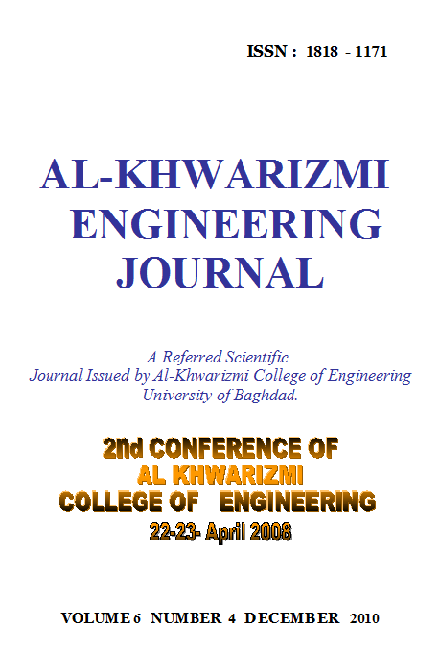An Optimum Design of Cam Mechanisms with Roller Follower for Combined Effect of Impact and High Contact Loads
Abstract
The problem in the design of a cam is the analyzing of the mechanisms and dynamic forces that effect on the family of parametric polynomials for describing the motion curve. In present method, two ways have been taken for optimization of the cam size, first the high dynamic loading (such that impact and elastic stress waves propagation) from marine machine tool which translate by the roller follower to the cam surface and varies with time causes large contact loads and second it must include the factors of kinematics features including the acceleration, velocity, boundary condition and the unsymmetrical curvature of the cam profile for the motion curve.
In the theoretical solution the unidirectional impact stress waves with the Mushkelishvilis inverse of the singular integral equation for contact stress have been used for analytical solution and a numerical solution have bean solved using F.E.M (ANSYS 10) for stress analysis in a cam surface at condition of rise-dwell-return (R-D-R) motion of the follower, also to compare the analytical and numerical results that have been used different pressure angles in the rise and return of the motion curves in unsymmetrical cam profile for optimum design.
Downloads
References
[2] Jesen P. W, "Cam Design and Manufacture" 1987, Marcel Dekker, New York and Basel.
[3] Lee M. K, "Design for Manufacturability of Speed-Reduction Cam Mechanisms" M. Eng. Thesis, Department of Mechanical Engineering, McGill University, Monterpal, 2001.
[4] Yoon K. and Rao S. S. "Cam Motion Synthesis Using Cubic Splines" ASME Journal of Mechanical Design, 115: 441-446, 1993.
[5] Yu Q. and Lee H. P. "A new Family of Parameterized Polynomial for Cam Synthesis" Trans ASME, J. Mech. Des. 1995, 117: 653-654.
[6] Khalil Sherafatnia "Vibration in Cam-Follower Systems" July 2007.
[7] Vasian Paradorn "An Impact Model for the Industrial Cam-Follower System: Simulation and Experiment" Thesis of Master Degree in Mech. Eng. Worcester Polytechnic Institute, October 11th , 2007.
[8] Jevzy Zajaczkowski "Application of Mathematical Methods to Designing a Cam-Driven Loom Batten " Fibres and Textiles in Eastern Europe, Vol. 13, No. 3, Page 70, 2005.
[9] "Valve Train Design and Calculation for High-Performance Engines" Advanced Engine Technology, 2009.
[10] Barken P. "Impact Design in Mechanical Design " Hand Book, H. Rothbart, Ed, McGraw-Hill, Chapter 31, New York, 1996.
[11] Jonas A. Zukas, Theodore Nicholas and Hallock F. Swift "Impact Dynamics" John Wiley and Sons, 1982.
[12] Mushkelishvili N.I. "Singular Integer Equation" Translated by J. R. M. Radok, 1977. Noordhoff International Publishing.
[13] Khadem, R. and Oconner,J. J. "Adhesive or Frictionless Compression of an Elastic Rectangular Between Two Identical Elastic Half-Spaces" Int. J. Eng. Sci., 1969, Vol. 7, Page 153-168.
Published
Issue
Section
License
Copyright: Open Access authors retain the copyrights of their papers, and all open access articles are distributed under the terms of the Creative Commons Attribution License, which permits unrestricted use, distribution, and reproduction in any medium, provided that the original work is properly cited. The use of general descriptive names, trade names, trademarks, and so forth in this publication, even if not specifically identified, does not imply that these names are not protected by the relevant laws and regulations. While the advice and information in this journal are believed to be true and accurate on the date of its going to press, neither the authors, the editors, nor the publisher can accept any legal responsibility for any errors or omissions that may be made. The publisher makes no warranty, express or implied, with respect to the material contained herein.












